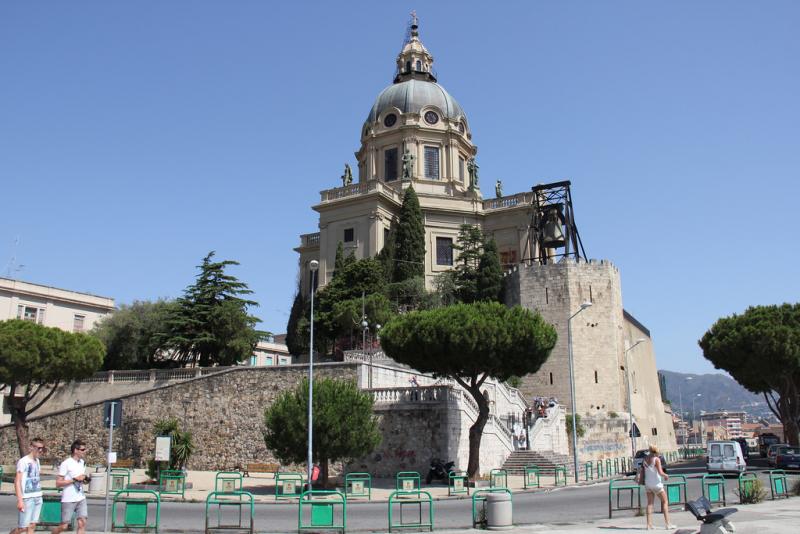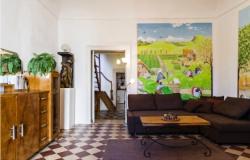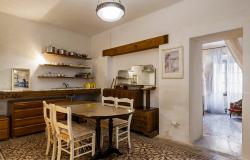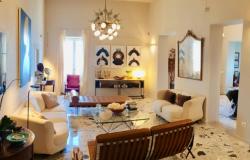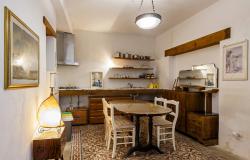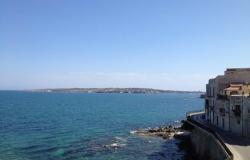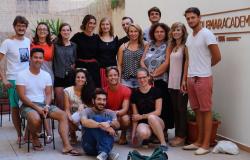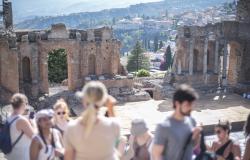Last week we were introduced to the town of Messina, and the history of this important place in the northeast corner of Sicily in part one of this two-part guide.
The architecture remains one of Messina's jewels in its crown. Take the city's cathedrals and churches. The main Cathedral was built in the 12th century by the Normans, and the original Norman structure can be traced to the building's aspidal area. The Cathedral contains a mixture of styles and influences in its design. There are Gothic influences in the facade's three portals (which are said to come from around the 15th century). Some of the Cathedral's decorations date back to the original building, although others have either been reconstructed or added at later dates. Notable decorations include the architrave's sculpture of Christ Among The Evangelists and various mosaics originating from the 14th century.
Messina Cathedral plays host to one of the world's biggest astronomical clocks. The clock in question was added in 1933 by the Ungerer Company of Strasbourg – the bell tower clock is a fabulous scenic attraction in itself. Another notable attraction is the belfry's mechanical statues that come to life every day at noon. It's a unique facet of the Cathedral that attracts the visitors who come to see this animated depiction of Messina's religious and civil history.

Near the Cathedral is Chiesa del Carmine. This church is also known as The Sanctuary of Our Lady of Mount Carmel. It includes no less than seven chapels, including the Chapel of St Heart, the Chapel of St Anne and the Chapel of St Lucy. The inside of the church is shaped like a Greek cross, decorated with polychrome marble and marble columns. One of the most impressive aspects of Chiesa del Carmine is the Tamburini Organ, which dates back to around 1954. Originally built by the Tamburini of Crema company, the organ has since been maintained and restored to ensure that it boasts one of the richest, fullest sounds in the world.
Surviving the 1908 earthquake was the Church of the Annunziata dei Catalani. The church was built in the late Norman period. Arabic-style architecture can be reflected in the transept's outside decoration. This particular source is seen in the way in which small columns separate a set of blind arches.
 12th century Church of the Annunziata dei Catalani, Photo credit: Wikimedia commons
12th century Church of the Annunziata dei Catalani, Photo credit: Wikimedia commons
One of the few instances of genuine Gothic architecture can be found in the Church of Santa Maria degli Alemanni. The building's arched windows and distinctive buttresses are signs of that particular style.
With the go-ahead given for construction by Henry VI of Swabia, the church was constructed in the early 13th century. It was at one point a place for the Teutonic Knights to rest and receive shelter and care. A number of restorations have been undertaken in the 20th century (1949, 1951, 1985 and 1994) with the church reopening to the public in 2001.
Another classic example of Messina's religious architecture is the Sanctuary of Montevergine, which is said to have been originally built in the early 11th century. It is the resting place of the Francescan Italian saint and co-patroness of Messina, Eustochia Smeralda Calafato.
 It's not just religious architecture that Messina's famous for. It is the location of a number of iconic landmarks and monuments that are recognised all over the world. Two notable examples are the work of Giovanni Angelo Montorsoli – the Fountain of Orion and the Fountain of Neptune. The Fountain of Orion was completed in the mid 1500s, and was regarded as one of the tallest and largest fountains of its time. A Candelabrum fountain, Orion is structured in contrasting polygonal receiving basin and higher circular basins. The fountain also includes sculpted creatures and carved female nudes.
It's not just religious architecture that Messina's famous for. It is the location of a number of iconic landmarks and monuments that are recognised all over the world. Two notable examples are the work of Giovanni Angelo Montorsoli – the Fountain of Orion and the Fountain of Neptune. The Fountain of Orion was completed in the mid 1500s, and was regarded as one of the tallest and largest fountains of its time. A Candelabrum fountain, Orion is structured in contrasting polygonal receiving basin and higher circular basins. The fountain also includes sculpted creatures and carved female nudes.
Montorsoli's subsequent Fountain of Neptune was a break with convention in that it features one raised central figure, an innovation in fountain design at the time. It was designed to signify the protection and strength of Messina. This was achieved by contrasting the confident, static pose of Neptune with the recoiling sea beasts, Scylla and Charybdis. The monsters are said to represent the rocks near Messina's harbour, potential risks to all boats and ships.
It's also worth checking out the two surviving examples of the Four Fountains. Commissioned by Pope Sixtus V, the fountains were constructed between 1588 and 1593. The Fountains contained figures that represented the Rivers of Tiber and Aniene, as well as the goddesses Diana and Juno.
Although its citadel was destroyed in the 1894 earthquake, the 16th century Porta Grazia di Messina remains. This gate or fortress was designed to be the main entrance of the citadel. It's a fascinating piece that is flanked by two pillars and two octagonal windows. It's known for its elaborate touches such as the leering marble gargoyles in the keystone and is a memorable Messina marvel.
Beside the Messina Cathedral is Palazzo Calapaj, which is claimed to be the sole surviving instance of 18th century stately architecture. This beautiful building comprises two floors and a basement. It's famous for its architectural flourishes such as its first and second floor balconies, embossed windows, inner courtyard and intricately designed interior staircase. It's well worth a look.
A more unorthodox but equally spectacular attraction in Messina is the electrical pylon destination. Originally built in the mid 1950s, two electric pylons were the highest in the world at the time. The power lines have subsequently been removed, and today, it's possible to visit the location on the Sicilian shore.
If you're looking to connect with nature, then a trip to Orto Botanico is recommended. This botanical garden is run by the University of Messina and was originally created by Pietro Castelli in 1638. Despite subsequent setbacks such as the Spanish attack in 1678 and the 1908 earthquake, the garden flourishes beautifully today. It includes a broad selection of plants and trees, with its tree range including Casuarina torulosa and Ficus macrophylla.
 Orto Botanico di Messina, Photo Credit: Ortobotanico.it.
Orto Botanico di Messina, Photo Credit: Ortobotanico.it.
Messina's Regional Museum offers a treasure trove of attractions. It's spread over three dedicated sections: archaeology, sculpture and painting gallery. Among the items on display are the sculptures of Madonna With Child by Francesco Laurana and Madonna Of The Crippled by Goro di Gregorio. The museum also plays host to some classic Caravaggio works of art including The Worship Of The Shepherds and The Raising Of Lazarus.
More modern artworks are showcased in Messina's Provincial Gallery Of Modern and Contemporary Art. It's a relatively new building, opened in May 1998. A fabulous showcase for the city's cultural and artistic heritage, the Gallery includes classic pieces of art, sculptures as well as an exhibition dedicated to Sicilian writer Salvatore Quasimodo. The exhibition proudly displays archive material which was acquired in 2000 – photos, letters and manuscripts are on show. Artists such as Mimmo Rotella, Renato Guttuso and Mario Mafai are represented in the Gallery to great effect.
If you're feeling peckish after sampling the sights of Messina, then it's worth sampling the delicious local cuisine. Fish dishes are popular in this city, including swordfish, shellfish and stockfish. Sweet dishes are also highly regarded. The fried pastry dough and cream filling make for an irresistible combination in Cannoli while the tasty sponge Cassata Cake contains all sorts of tasty treats such as chocolate or vanilla filling, marzipan, icing and candied fruit. Pignolata Messinese is another wonderful dessert that contains dark chocolate, eggs, butter, vanilla and lemon. And if you're still feeling hungry after these mouthwatering examples, then Messina's ice creams are well worth a taste. Some of the most popular places to go for sweets, cakes and ice creams include Gelateria de Luca, Eden Gelateria Caffetteria and Eden Pasticceria, Dolce Delizia, Pasticceria Sacca and Gelateria Pasticceria Ragusa Eventi.
 Pignolata Messinese, photo credit: agrodolce.it
Pignolata Messinese, photo credit: agrodolce.it
Messina is a city bursting at the seams with heritage, architecture and culture. Whether your taste is for history, art or food and drink, Messina has it all. Like San Ranieri Lighthouse, Messina stands tall.
